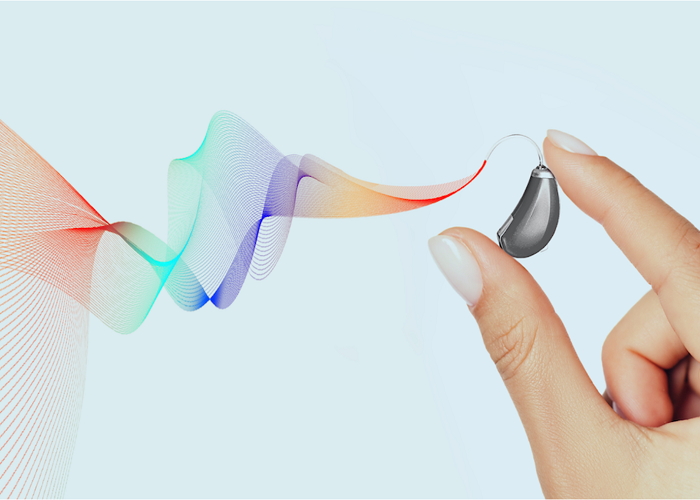Hearing loss is a common problem affecting millions of people worldwide. However, many of them do not have access to affordable and effective hearing aids that can improve their quality of life. That’s why over-the-counter (OTC) hearing aids are a game-changer in the hearing health industry.
OTC hearing aids are devices that can be purchased without a prescription and can be self-fitted and personalized at home. They offer convenience, comfort, and cost savings for consumers who need mild to moderate hearing assistance. One of the leading brands in this space is Eargo, our revolutionary new hearing aid that’s virtually invisible, water-resistant, and adaptable to any environment.
In this article, we will explore the evolution of hearing aids from ear trumpets to OTC devices and how Eargo is changing the way people hear the world.
The Evolution of Hearing Aids
Hearing aids are devices that help people with hearing loss to hear better. They have a long and fascinating history, from the simple ear trumpets of the 17th century to the sophisticated digital devices of today. However, they also have faced many challenges in terms of accessibility and affordability for millions of people who need them.
The earliest hearing aids were ear trumpets, which were funnel-shaped devices that collected and directed sound into the ear. In the late 19th century, the invention of the telephone and the electric battery led to the development of the first electric hearing aids.
The 20th century saw many advances in hearing aid technology. These innovations made hearing aids smaller, more powerful, more customizable, and more discreet. However, despite these improvements, hearing aids remained expensive and inaccessible for many people who needed them.
The Birth of Over-the-Counter Hearing Aids
The cost of prescription hearing aids in the United States can cross $7,000 per pair, which most insurance plans do not cover. Moreover, getting prescription hearing aids requires a medical exam, a prescription, and a fitting adjustment by an audiologist, which can be time-consuming and inconvenient.
This is where over-the-counter (OTC) hearing aids come in. OTC hearing aids are medical devices that anyone can purchase without a prescription and can be self-fitted and personalized at home. They are designed for adults with mild to moderate hearing loss who want a more affordable and accessible alternative to prescription hearing aids.
What Type of Technology Is in OTC Hearing Aids?
OTC hearing aids use advanced technology such as Bluetooth connectivity, smartphone apps, artificial intelligence, and machine learning to offer users convenience, comfort, and customization. Some of the leading brands in this space are Eargo, Jabra, Bose, and Sony. Their devices vary in features, prices, styles, and customer support, but they all aim to provide users with a better hearing experience.
OTC hearing aids are changing the landscape of hearing health care by offering users more options, more control, and more empowerment over their hearing needs. They are a viable solution for many people who want to improve their hearing without high costs or waiting for a long-term appointment.
The Benefits of OTC Hearing Aids
Over-the-counter (OTC) hearing aids are a new category of hearing devices that offer many benefits for people with mild to moderate hearing loss. You can obtain them without visiting a hearing health specialist, saving you time and money.
OTC hearing aids are also more affordable than prescription hearing aids, which can cost thousands of dollars per pair and are not covered by most insurance plans. OTC hearing aids are sold in stores and online for a fraction of the price, ranging from $200 to $4,000 per pair.
They use advanced technology to improve your hearing quality and comfort. They amplify specific sound frequencies to compensate for your hearing loss while reducing background noise and feedback. They also allow you to adjust the settings for different environments and preferences using either a smartphone app or a simple tap on your ear. Some OTC hearing aids, such as Eargo, have a unique design that makes them virtually invisible and comfortable to wear.
With OTC hearing aids, you can enhance your quality of life and enjoy better communication, social interaction, and mental health. You can hear conversations, music, TV, and other sounds more clearly and naturally. You can also avoid the stigma and hassle of wearing bulky or noticeable hearing aids.
Eargo: Leading the Over-the-Counter Hearing Aid Revolution
Eargo is a company that paves the way for other companies in the over-the-counter hearing aid revolution. Our mission is to change the way the world thinks about hearing loss by dramatically improving the consumer experience at every step of the hearing care journey. The vision is to make hearing wellness accessible, affordable, and enjoyable for everyone.
Eargo offers a range of hearing aid models designed for people with mild to moderate hearing loss. Our hearing aids are sleek, discreet, and comfortable to wear. They are completely-in-the-canal devices that use patented soft silicone fibers to hold them in place and allow natural air circulation in the ear.
Our hearing aids amplify specific sound frequencies to compensate for hearing loss while reducing background noise and feedback. They also have different settings for various listening environments and preferences, which can be controlled by using a smartphone app.
What Customers Say About Eargo
Eargo’s customers are very satisfied with their products and services. Eargo has received many positive reviews on Trustpilot, where it has a 4.7 out of 5 rating based on 139 reviews. Customers praise Eargo for its quality, convenience, affordability, and customer support. Here are some of the testimonials from Eargo users:
“The charger’s profile is also compact and easily transportable in a purse. Cleaning and maintaining the aids is an easy nightly ritual.”
“The Eargo7 is my fourth set of hearing devices. The VA provided (free) the other three, and I am currently issued the Starkey Levio Edge over the ear. Eargo7 is the best hearing aid that suits my lifestyle and personal requirements.”
“I am a guitarist playing in church and also playing traditional Irish music, and having Eargo 7 enhances my ability to hear other musicians and singers, which greatly improvises my hearing quality.”
Eargo: The Future of Hearing Aids
Hearing aids are devices that help people with hearing loss to hear better. They have a long and fascinating history, from the simple ear trumpets of the 17th century to the sophisticated digital devices of today. However, they also have faced many challenges regarding accessibility and affordability for millions of people who need them.
The future of hearing aids is likely to be shaped by several factors, such as the following:
- Artificial Intelligence and Machine Learning: The advancement of artificial intelligence (AI) and machine learning (ML) can improve the diagnosis, fitting, and customization of hearing aids. AI and ML can also enable new features such as voice recognition, translation, and biometric monitoring.
- Federal Approval: The FDA has recently approved the sale of OTC hearing aids in the United States, which is expected to increase the availability and competition of these devices.
- Wearable Technology: The integration of hearing aids with other wearable devices, such as smartwatches, fitness trackers, and earbuds, can revolutionize hearing aid technology further. These devices can provide additional functions and benefits for hearing aid users, such as phone calls.
One of the leading brands in the future of hearing aids is Eargo, a company that offers innovative OTC hearing aids that are virtually invisible, water-resistant, and adaptable to any environment.
Eargo’s devices are inspired by fly fishing feathers and “float” inside your ear canal with soft, flexible tips. Eargo’s devices also use advanced technology such as Bluetooth connectivity, smartphone apps, artificial intelligence, and machine learning to offer users convenience, comfort, and customization.
OTC hearing aids are changing the landscape of hearing health care by offering users more options, control, and empowerment over their hearing needs. They might not replace professional care or treat severe hearing loss. Still, they are a viable solution for many people who want to improve their hearing without breaking the bank or waiting for an appointment.
Conclusion
In this article, we have discussed the evolution of hearing aids from ear trumpets to over-the-counter devices and how Eargo is changing the way people hear the world. We have explored the history, benefits, drawbacks, and future of hearing aids and how they can improve the quality of life and communication for millions of people with hearing loss.
We have also highlighted Eargo’s mission, vision, product range, product reviews and customer satisfaction, and how they lead the over-the-counter hearing aid revolution. We hope that this article has been informative and helpful for you. If you want to learn more about Eargo and its products, you can visit their website. Thank you for reading!




